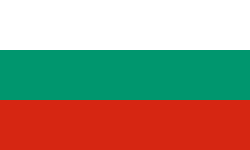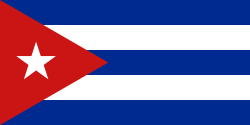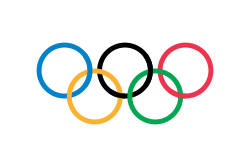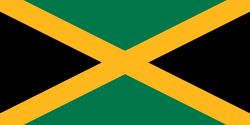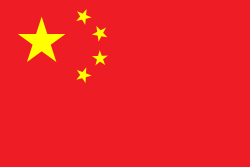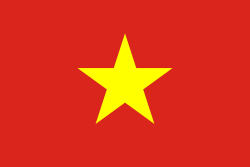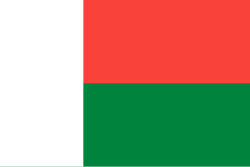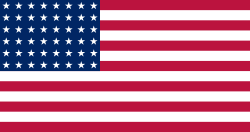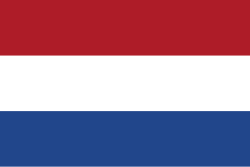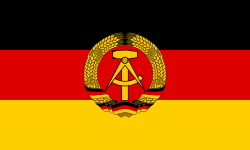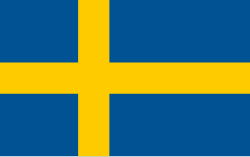100 meter häck för damer i friidrott vid olympiska sommarspelen 1992
| Damernas 100 meter häck vid de XXV:e olympiska sommarspelen | ||||
| Anläggning | Estadi Olímpic de Montjuïc | |||
|---|---|---|---|---|
| Datum | 5 augusti 1992 (kval och kvartsfinaler) 6 augusti 1992 (semifinaler och final) | |||
| Deltagare | 37 från 22 nationer | |||
| Vinnartid | 12,64 | |||
| Medaljörer | ||||
| ||||
| ||||
| ||||
| ← 1988 1996 → | ||||
| Friidrott vid olympiska sommarspelen 1992 | ||||
| ||||
|---|---|---|---|---|
| ||||
| ||||
| ||||
| ||||
| ||||
| ||||
| ||||
100 meter häck för damer vid olympiska sommarspelen 1992 i Barcelona avgjordes 7 augusti.
Medaljörer
| Gren | Guld | Silver | Brons | |||
| 100 meter häck | Voula Patoulidou | 12,64 | LaVonna Martin | 12,69 | Jordanka Donkova | 12,70 |
Resultat
- Q innebär avancemang utifrån placering i heatet.
- q innebär avancemang utifrån total placering.
- DNS innebär att personen inte startade.
- DNF innebär att personen inte fullföljde.
- DQ innebär diskvalificering.
- NR innebär nationellt rekord.
- OR innebär olympiskt rekord.
- WR innebär världsrekord.
- WJR innebär världsrekord för juniorer
- AR innebär världsdelsrekord (area record)
- PB innebär personligt rekord.
- SB innebär säsongsbästa.
- w innebär medvind > 2,0 m/s
Final
| Placering | Final | Tid |
|---|---|---|
| 12,64 | ||
| 12,69 | ||
| 12,70 | ||
| 4. | 12,75 | |
| 5. | 12,75 | |
| 6. | 12,87 | |
| 7. | 13,01 | |
| 8. | 13,57 |
Semifinaler
| Placering | Heat 1 | Tid |
|---|---|---|
| 1. | 13,10 | |
| 2. | 13.14 | |
| 3. | 13.15 | |
| 4. | 13.16 | |
| 5. | 13.32 | |
| 6. | 13.35 | |
| 7. | 13.39 | |
| 8. | 13.44 | |
| 9. | 13.68 |
| Placering | Heat 2 | Tid |
|---|---|---|
| 1. | 12,81 | |
| 2. | 12.87 | |
| 3. | 12.88 | |
| 4. | 13.14 | |
| 5. | 13.22 | |
| 6. | 13.22 | |
| 7. | 13.22 | |
| — | 13.24 | |
| — | DNS |
Kvartsfinaler
| Placering | Heat 1 | Tid |
|---|---|---|
| 1. | 12,82 | |
| 2. | 13.01 | |
| 3. | 13.23 | |
| 4. | 13.26 | |
| 5. | 13.28 | |
| 6. | 13.28 | |
| 7. | 13.31 | |
| 8. | 13.32 |
| Placering | Heat 2 | Tid |
|---|---|---|
| 1. | 12,84 | |
| 2. | 12.96 | |
| 3. | 13.05 | |
| 4. | 13.06 | |
| 5. | 13.07 | |
| 6. | 13.16 | |
| 7. | 13.17 | |
| 8. | 13.33 |
| Placering | Heat 3 | Tid |
|---|---|---|
| 1. | 12,76 | |
| 2. | 13.06 | |
| 3. | 13.17 | |
| 4. | 13.26 | |
| 5. | 13.28 | |
| 6. | 13.31 | |
| 7. | 13.36 | |
| 8. | 15.84 |
Försöksheat
| Placering | Heat 1 | Tid |
|---|---|---|
| 1. | 13,04 | |
| 2. | 13.23 | |
| 3. | 13.40 | |
| 4. | 13.45 | |
| 5. | 13.58 | |
| 6. | 13.81 | |
| 7. | 15.01 | |
| — | DNS |
| Placering | Heat 2 | Tid |
|---|---|---|
| 1. | 12,90 | |
| 2. | 13.11 | |
| 3. | 13.19 | |
| 4. | 13.20 | |
| 5. | 13.22 | |
| 6. | 13.42 | |
| 7. | 15.16 |
| Placering | Heat 3 | Tid |
|---|---|---|
| 1. | 12,96 | |
| 2. | 13.08 | |
| 3. | 13.10 | |
| 4. | 13.25 | |
| 5. | 13.29 | |
| 6. | 13.33 | |
| 7. | 13.73 | |
| 8. | 14.37 |
| Placering | Heat 4 | Tid |
|---|---|---|
| 1. | 12,82 | |
| 2. | 13.07 | |
| 3. | 13.19 | |
| 4. | 13.26 | |
| 5. | 13.40 | |
| 6. | 13.55 | |
| — | DQ | |
| — | DNS |
| Placering | Heat 5 | Tid |
|---|---|---|
| 1. | 12,96 | |
| 2. | 13.11 | |
| 3. | 13.12 | |
| 4. | 13.14 | |
| 5. | 13.28 | |
| 6. | 13.44 | |
| 7. | 13.88 | |
| 8. | 14.26 |
Referenser
| ||||||||
| |||||||||||||||||||
Media som används på denna webbplats
An icon that represents a gold medal
An icon that represents a silver medal
An icon that represents a bronze medal
Olympic Movement flag
Proportions 2:3, created 1913, adopted 1914, first used 1920.
- Colors as per http://fairspielen.de/wp-content/uploads/2015/09/Annexe-3-Olympism_and_the_Olympic_Symbol_-_Principles_and_Usages_Guide-1.pdf
- blue: PMS 3005C
- yellow: PMS 137C
- black: PMS 426C
- green: PMS 355C
- red: PMS 192C
- Dimensions of the rings taken from http://fairspielen.de/wp-content/uploads/2015/09/Annexe-3-Olympism_and_the_Olympic_Symbol_-_Principles_and_Usages_Guide-1.pdf
Flag of Jamaica. “The sunshine, the land is green, and the people are strong and bold” is the symbolism of the colours of the flag. GOLD represents the natural wealth and beauty of sunlight; GREEN represents hope and agricultural resources; BLACK represents the strength and creativity of the people. The original symbolism, however, was "Hardships there are, but the land is green, and the sun shineth", where BLACK represented the hardships being faced.
The flag of Slovenia.
- "The construction sheet for the coat of arms and flag of the Republic of Slovenia
- is issued in the Official Gazette Uradni list Republike Slovenije #67, 27 October 1994
- as the addendum to the Law on the coat of arms and flag."
Kanadas flagga, införd 1965; denna version med Pantone‐nyanser. Nuvarande utformning ersatte den tidigare kanadensiska Red Ensign.
The civil ensign and flag of Belgium. It is identical to Image:Flag of Belgium.svg except that it has a 2:3 ratio, instead of 13:15.
US Flag with 48 stars. In use for 47 years from July 4, 1912, to July 3, 1959.
Författare/Upphovsman: F l a n k e r, Licens: CC BY-SA 2.5
Flag of the Kingdom of Sardinia (1851-1861) and of the Kingdom of Italy (1861-1946). Use: Civil flag and ensign. In a governmental or a military context, the crowned version (see Crowned version) was always used (as State flag and naval ensign).
Flag of the unified Team of Germany for the Olympic Games, 1960–1968.
Författare/Upphovsman: Scroch, Licens: CC BY-SA 3.0
Flag of Bulgaria (1971-1990). Flag of Bulgaria with Bulgarian coat from 1971.
Författare/Upphovsman: Scroch, Licens: CC BY-SA 3.0
Flag of Bulgaria (1971-1990). Flag of Bulgaria with Bulgarian coat from 1971.


